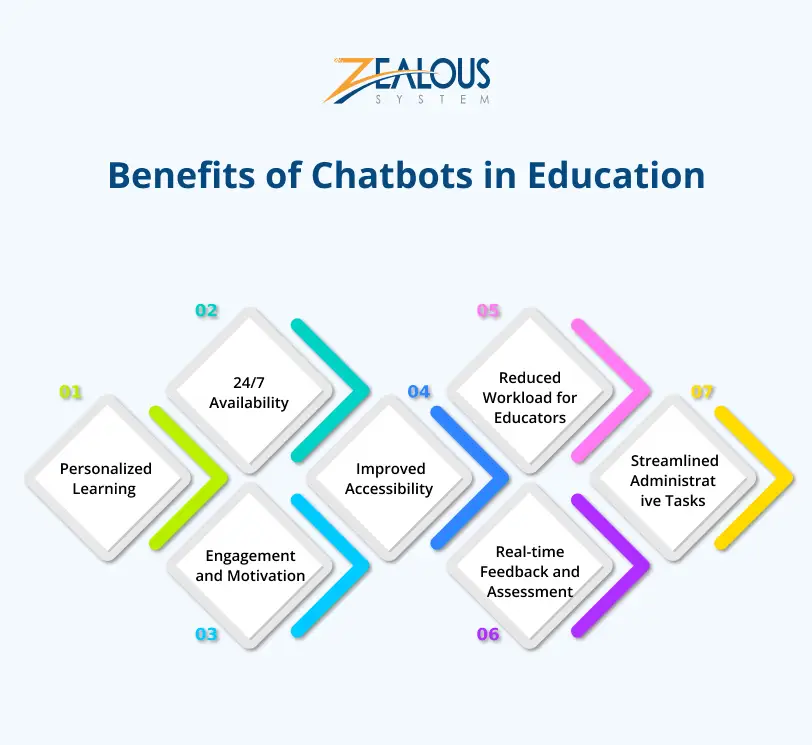
- Company
- Services
- UI/UX Design Services
- Microsoft Dynamics 365
- Mobile App Development
- AI Software Development
- Web App Development
- Generative AI Development
- Digital Product Development
- Enterprise Mobility
- SaaS Application Development
- Application Integration
- White-label WP Maintenance
- ERP Software Solutions
- Software Testing
- Offshore Development Center
- Let’s Connect
- Trending
- Technology
- Industry
- Build Your Team
- Our Work
- Company
- Services
- UI/UX Design Services
- Microsoft Dynamics 365
- Mobile App Development
- AI Software Development
- Web App Development
- Generative AI Development
- Digital Product Development
- Enterprise Mobility
- SaaS Application Development
- Application Integration
- White-label WP Maintenance
- ERP Software Solutions
- Software Testing
- Offshore Development Center
- Let’s Connect
- Trending
- Technology
- Industry
- Build Your Team
- Our Work
We use cookies and similar technologies that are necessary to operate the website. Additional cookies are used to perform analysis of website usage. please read our Privacy Policy
Chatbots in Education: Benefits, Use Cases, Development Process, Challenges

The use of artificial intelligence (AI) has revolutionized numerous industries, and education is no exception. Among the various AI-driven tools, chatbots have become a significant force, transforming the learning experience in unprecedented ways.
The education sector is undergoing a significant transformation. Traditional, one-size-fits-all learning methods are slowly giving way to more personalized and engaging approaches. In this changing environment, technology plays a crucial role, and chatbots are emerging as a powerful tool to enhance the learning experience for students of all ages.
Utilizing technologies like ChatGPT, chatbots are revolutionizing education by enabling institutions to use advanced natural language processing capabilities. These chatbots engage with students, providing answers to inquiries, and delivering personalized guidance and support.
Chatbots are like helpful assistants used in many different places. They can make applying for things easier, give personalized help with learning, and gather information and feedback to make services and teaching better for students.
Chatbots In Education Statistics
- Approximately 30-40% of schools and universities recognize the necessity of implementing AI chatbots.
- Chatbots integrated into educational systems can potentially reduce teachers’ workload by up to 40%.
- A significant majority, 77%, of students express favorable attitudes towards utilizing chatbots to enhance the overall educational experience.
- Around 64% of learners report feeling at ease when interacting with chatbots.
- Research indicates that 35% of adults are open to utilizing chatbots within educational environments.
- An encouraging 41% of users find chatbots to be either “very helpful” or “somewhat helpful” for acquiring new knowledge.
- In 2020, roughly 22% of individuals worldwide regularly engaged with educational chatbots.
- The adoption of AI within the education sector in the United States is projected to experience a substantial growth of 47.5% by 2021-2022.
- Global expenditure on AI for educational purposes is forecasted to reach $6 billion by the year 2025.
- Approximately 52% of higher education institutions incorporate AI, including chatbots, in their operations.
What are Chatbots in Education?
Chatbots are conversational AI (artificial intelligence) programs that simulate human interaction through text or voice messages. In the educational context, chatbots are designed to interact with students, providing support, answering questions, and delivering learning content in a personalized and engaging manner.
Benefits of Chatbots in Education
Chatbots are emerging as a powerful platform for educators, transforming how students learn and interact with knowledge. But what exactly makes chatbots so beneficial in education? Let’s go through the key advantages they offer:
1. Personalized Learning:
Chatbots are expert at catering to individual student needs. By analyzing student interactions and progress, they can tailor their responses and recommendations. Imagine a student struggling with a specific concept.
A chatbot can provide targeted explanations, suggest relevant practice exercises, or recommend alternative learning resources, all at the student’s own pace.
2. 24/7 Availability:
Unlike human tutors or instructors with limited hours, chatbots are tireless assistants. Students can access them anytime, anywhere. This ensures they receive immediate support or clarification whenever they face a learning hurdle, bringing up a more self-directed and independent learning style.
3. Engagement and Motivation:
Chatbots can transform learning into an interactive and engaging experience. By integrating gamification elements, quizzes, and personalized dialogues, they can spark student curiosity, boost motivation, and make learning more enjoyable.
4. Improved Accessibility:
Chatbots have the potential to bridge the gap for students with disabilities or those in remote locations. They can provide learning materials in various formats, offer explanations in different languages, or cater to diverse learning styles. This promotes inclusivity and ensures that no student is left behind.
5. Reduced Workload for Educators:
Chatbots can be programmed to answer these frequently asked questions (FAQs), freeing up valuable time for educators to focus on more important aspects like personalized instruction, in-depth discussions, and creative lesson planning.
6. Real-time Feedback and Assessment:
Chatbots can administer quizzes, practice exercises, and mini-tests, providing immediate feedback to students. This allows for early identification of knowledge gaps and areas needing improvement. Students can then receive targeted support or additional practice to solidify their understanding.
7. Streamlined Administrative Tasks:
Chatbots can be programmed to manage basic administrative tasks, such as providing information about class schedules, enrollment procedures, or campus resources. This reduces the administrative burden on educators and staff, allowing them to dedicate more time and energy to supporting students’ academic success.
Use Cases for Chatbots in Education
Chatbots are revolutionizing the education sector by offering various use cases that enhance the learning experience for students, streamline administrative tasks for educators, and provide valuable support services. Here are several compelling use cases for chatbots in education:
1. 24/7 Student Support:
Chatbots provide round-the-clock assistance to students, answering queries related to coursework, assignments, and schedules. Students can access instant support for their academic needs anytime, anywhere.
2. Personalized Learning:
Through AI algorithms, chatbots can analyze student performance data and tailor learning materials based on individual strengths, weaknesses, and learning styles. This personalized approach helps students learn at their own pace and improve comprehension.
3. Language Learning:
Chatbots equipped with natural language processing capabilities can facilitate language learning by engaging students in conversational practice. They can provide vocabulary exercises, grammar corrections, and simulated dialogue scenarios to enhance language proficiency.
4. Assessment and Feedback:
Chatbots can administer quizzes, tests, and assessments to evaluate student knowledge and provide immediate feedback on performance. This helps students identify areas for improvement and track their progress over time.
5. Administrative Support:
Chatbots assist with administrative tasks such as course registration, scheduling, and campus navigation. They can also provide information on academic policies, deadlines, and campus resources, reducing the burden on administrative staff.
6. Virtual Tutoring:
Chatbots can act as virtual tutors, guiding students through difficult concepts, explaining complex topics, and offering additional practice exercises. They provide personalized tutoring sessions tailored to individual learning needs.
7. Career Guidance:
Chatbots offer career guidance and counseling services, helping students explore career paths, identify relevant opportunities, and develop professional skills. They can provide information on internships, job openings, and networking events.
8. Accessibility Support:
Chatbots improve accessibility for students with disabilities by providing alternative modes of communication, such as text-to-speech or speech-to-text capabilities. They ensure that all students have equal access to educational resources and support services.
9. Parent-Teacher Communication:
Chatbots facilitate parents and teachers communication by sending regular updates on student progress, attendance, and behavior. They provide a convenient channel for parents to stay informed and involved in their child’s education.
10. Student Engagement:
Chatbots engage students through interactive activities, gamified learning experiences, and multimedia content. They foster active participation and motivation by making learning more enjoyable and interactive.
Challenges and Considerations for Implementing Chatbots in Education:
While chatbots offer significant potential, there are challenges to consider:
- Content Development: Effective chatbots require high-quality, engaging content and a comprehensive knowledge base to provide accurate and helpful responses.
- Technical Limitations: Chatbots are still under development, and their capabilities may be limited in handling complex questions or nuanced conversations.
- Privacy and Security Concerns: Data privacy is most important, and educators need to ensure that student information collected by chatbots is secure and used responsibly.
- Ethical Considerations: The use of AI in education raises ethical questions regarding potential bias or the over-reliance on technology in the learning process.
Step-by-step Guide for Building an Effective Chatbot for Education
Educators can leverage chatbots to enhance student engagement, streamline administrative tasks, and deliver tailored educational content. This technical guide aims to provide educators with insights and best practices for building effective chatbots for educational purposes.
1. Understanding Educational Needs:
Before starting on chatbot development, educators must identify the specific needs and goals of their educational institution. This includes determining the target audience, defining the scope of the chatbot’s functionality, and understanding the learning objectives it aims to achieve.
2. Choosing the Right Platform:
Educators can choose from a variety of platforms and tools for building chatbots, each offering different features and capabilities. Popular options include:
Bot Frameworks: Frameworks like Microsoft Bot Framework, Dialogflow, and IBM Watson provide pre-built templates, natural language processing (NLP) capabilities, and integration with other systems.
Custom Development: For more flexibility and control, educators can opt for custom chatbot development using programming languages like Python, JavaScript, or Java.
3. Designing Conversational Flows:
Effective chatbots in education rely on well-designed conversational flows that guide users through interactions in a natural and intuitive manner. Educators should map out conversational scenarios, define user intents, and anticipate various user responses to ensure smooth and engaging interactions.
4. Integrating with Learning Management Systems (LMS):
To maximize the utility of chatbots, educators should integrate them with existing learning management systems (LMS) and educational platforms. This allows the chatbot to access course materials, assignments, grades, and other relevant data, providing students with personalized assistance and support.
5. Implementing Natural Language Processing (NLP):
Natural language processing (NLP) plays a crucial role in enabling chatbots to understand and respond to user queries in a human-like manner. Educators can leverage NLP techniques such as intent recognition, entity extraction, and sentiment analysis to enhance the chatbot’s conversational capabilities.
6. Incorporating Machine Learning:
Machine learning algorithms can help chatbots improve over time by learning from user interactions and feedback. Educators can train chatbots on large datasets of educational content to enhance their ability to provide accurate responses and recommendations.
7. Ensuring Data Privacy and Security:
Educational chatbots handle sensitive student data, so ensuring data privacy and security is paramount. Educators should implement robust security measures such as encryption, access controls, and regular security audits to protect user information and comply with privacy regulations.
8. Testing and Support:
Before deploying a chatbot in a live educational environment, educators should thoroughly test its functionality, usability, and performance. User testing, beta trials, and feedback sessions can help identify areas for improvement and inform continuous updates to the chatbot.
Conclusion
Chatbots hold immense potential to revolutionize education by personalizing learning, providing 24/7 support, and improving engagement. With the expertise of education software development companies, these technologies can be further refined and optimized to meet the unique needs of educational institutions.
As chatbot development evolves and educators leverage their possibilities, they can play a significant role in creating a more effective and inclusive learning experience for all students.
We are here
Our team is always eager to know what you are looking for. Drop them a Hi!
Pranjal Mehta
Pranjal Mehta is the Managing Director of Zealous System, a leading software solutions provider. Having 10+ years of experience and clientele across the globe, he is always curious to stay ahead in the market by inculcating latest technologies and trends in Zealous.
Table of Contents
×



Comments